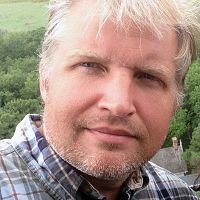Brecheisen et al., 2018
Time-series measurements of deep soil profile O2, CO2, soil moisture, and aboveground precipitation highlight differential rooting across landuse history treatments at the Calhoun Critical Zone Observatory
Brecheisen, Z.S., D. deB. Richter, C.W. Cook, P. Heine, J. Austin (2018)
American Geophysical Union 2018 Fall Meeting, Washington, DC, 10-14 Dec 2018
-
Calhoun, GRAD STUDENT
-
Calhoun, INVESTIGATOR
-
Calhoun, STAFF
-
Calhoun, STAFF
-
Calhoun, INVESTIGATOR
Abstract
Plot-based field investigations were undertaken at the Calhoun Critical Zone Observatory (CCZO) to determine how different critical zone measurements are able to quantify the vertical propagation of forest regeneration downward into soil profiles. The below-ground effects of 60-80 years of old-field forest succession in the CCZO were explored via chronosequence landuse history investigation. Chronosequence plots consist of reference hardwood forests, plowed agricultural fields, and old-field secondary pine forests recapitulating the history of landuse in the southeastern US. In this framework, reference hardwood soil profiles are minimally degraded in terms of erosion and soil biogeochemistry while currently cultivated agricultural plots are maximally impacted. Old-field secondary pine forests are considered to be intermediate and partially regenerated as reforestation has occurred and proceeded for decades, though the degree of belowground regeneration was uncertain. Each landuse history comparison plot has been studied above and below-ground. Soil profile monitoring of soil CO2 and O2 was conducted to characterize belowground forest functioning to 5m soil depth.
In spite of significant gains in secondary forest biomass, hardwood forest soils have been observed to have higher CO2 concentrations and lower O2 below 2m soil depth, past the soil B-horizon, than either agricultural plots or old-field pine forests. Results indicate that while there has been a high degree of soil regeneration above the B-horizon in old-field secondary forest, deep CZ rooting and associated processes below 2m remain significantly altered under old-field pine forests. This suggests that there may be a lag in below-ground regeneration relative to surficial soil regeneration. Abiotic CZ processes like storms were observed to effect soil gas dynamics in all landuse treatments and indicates great potential to advance the fundamental understanding of the linkages between upland management and landcover, aerobic respiration, and deep critical zone processes like mineral weathering of terrestrially-derived CO2 to streams.
Citation
Brecheisen, Z.S., D. deB. Richter, C.W. Cook, P. Heine, J. Austin (2018): Time-series measurements of deep soil profile O2, CO2, soil moisture, and aboveground precipitation highlight differential rooting across landuse history treatments at the Calhoun Critical Zone Observatory. American Geophysical Union 2018 Fall Meeting, Washington, DC, 10-14 Dec 2018.
 This Paper/Book acknowledges NSF CZO grant support.
This Paper/Book acknowledges NSF CZO grant support.
Explore Further





